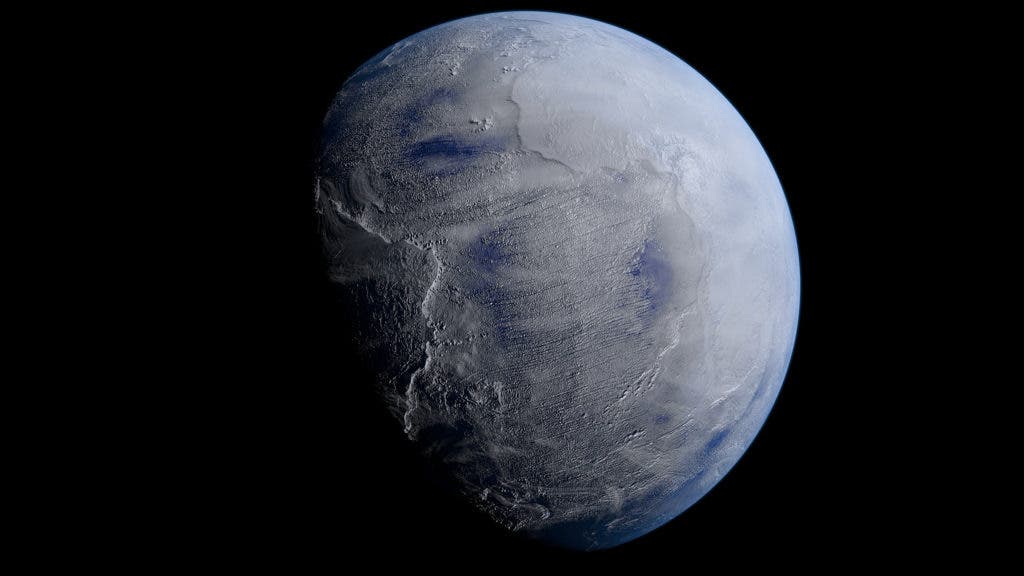A new paper showcases the massive effect CO2 levels in the atmosphere have on Earth’s climate, describing its link to the great cooling period in the Carboniferous and Permian ages.

We call it a ‘greenhouse’ gas for a reason. Today, it’s most widely known for the part it plays in climate change — but 300 million years ago, CO2 was involved in one of the most severe cooling events in Earth’s history. Using a large ensemble of computer simulations, Georg Feulner from the Potsdam Institute for Climate Impact Research was able to model how coal formation in the late Paleozoic came inches away of locking Earth into a ‘snowball state’.
A leaky greenhouse
In the very distant geological past, Earth was a much warmer place. Overall, it had a more uniform, tropical, humid climate than exists today, and plant life was going rampant. Vegetation resembled what you’d expect to see in a jungle setting today, but even more bountiful. Trees especially (they were still recent-ish technology at the time) were turbocharged by warm temperatures and swampy environments, growing to huge sizes. They lacked tree-rings, suggesting they could sustain growth throughout the year. All off this eventually led to Pangea (the only continent at the time) becoming plastered with immense quantities of biomatter. Some 300 million years ago,
Swampy, plant-infested areas are prime breeding spots for coal. Since that was basically all of the dry land at the time, most of the quality coal we’ve ever mined formed in this period. So much so that geologists know one subdivision of this time as the Carboniferous, which translates to ‘the coal-bearer’.
One unexpected side-effect of all this coal being formed, however, was that CO2 in the atmosphere was increasingly sequestered underground. Because of this, the Earth began to rapidly cool down. By the end of the Carboniferous, a full-fledged Ice Age had developed, one which came very close to lock our planet in a permanently frozen state.
“This illustrates the enormous dimension of the coal issue,” Feulner says. “The amount of CO2 stored in Earth’s coal reserves was once big enough to push our climate out of balance. When released by burning the coal, the CO2 is again destabilizing the Earth system.”
His research shows that some of the changes in temperature at the time can be attributed to other planetary factors, such as the axis tilt and the planet’s orbit. However, it also shows that CO2 concentrations in the atmosphere played the prime role in shaping the climate during the Carboniferous. Estimates drawn from samples of ancient soils and leaves show that CO2 levels fluctuated widely during this period, at one point dipping to about 100 parts per million (ppm) in the atmosphere — which is extremely low. Feulner’s models show that when atmospheric CO2 levels dip under 40 ppm, global glaciation is virtually guaranteed.
The flipside of Feulner’s findings is that burning coal today releases the CO2 captured over 300 million years ago. Today, we’re past the 400 ppm mark, which is above the 350 ppm deemed safe by the ICCP, but still under 450 ppm — a point where our chances of stabilizing the climate before planetary-scale irreversible damage is done are basically 50-50.
That’s because CO2 traps incoming heat in the Earth’s atmosphere, warming up the planet. Higher concentrations mean a higher percentage of incoming energy is trapped.
“It is quite an irony that forming the coal that today is a major factor for dangerous global warming once almost lead to global glaciation,” Feulner adds. “We should definitely keep CO2 levels in the atmosphere below 450 parts per million to keep our climate stable, and ideally much lower than that. Raising the amount of greenhouse gases beyond that limit means pushing ourselves out of the safe operating space of Earth.”
“Earth’s past teaches us that periods of rapid warming were often associated with mass extinction events. This shows that a stable climate is something to appreciate and protect.”
The paper “Formation of most of our coal brought Earth close to global glaciation” has been published in the journal PNAS.



